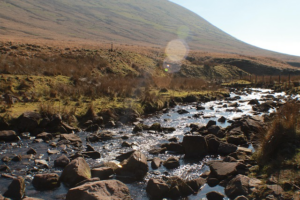roof repair tucson arizona
Roof Repair Tucson Arizona: A Comprehensive Guide
Introduction
Tucson, Arizona, is renowned for its vibrant culture, stunning natural landscapes, and diverse architecture. Amidst this unique urban fabric lies an essential aspect of any community’s infrastructure—the roof. This article delves into the intricacies of roof repair in Tucson, exploring its significance, historical evolution, global impact, economic implications, technological innovations, regulatory framework, challenges, and future prospects. By the end, readers will gain a comprehensive understanding of this vital service and its role in shaping urban environments.
Understanding Roof Repair Tucson Arizona
Definition and Core Components
Roof repair in Tucson refers to the maintenance, restoration, and replacement of roofing systems specific to residential and commercial properties within the city. It involves a range of tasks, from fixing minor leaks and damaged shingles to extensive reroofing projects. The core components of a roof repair project include:
- Roofing Materials: Asphalt shingles, metal panels, tile, and slate are commonly used in Tucson due to their climate-suitability and local building codes.
- Underlayment: A protective layer that provides extra insulation and water resistance beneath the visible roofing material.
- Flashings: These seal joints and valleys, preventing water intrusion at points like chimneys, vents, and walls.
- Gutters and Downspouts: Essential for channeling rainwater away from the foundation, they can also signal potential roof problems if damaged or blocked.
Historical Context and Significance
Roof repair has been an integral part of human habitation since ancient times. In Tucson’s context, the history of roofing is tied to the region’s unique climate and architectural trends. Historically, local builders have adapted roofing techniques to withstand the intense summer heat, frequent rainfall, and occasional snow in winter. This adaptation has led to a preference for low-slope roofs with strong water resistance and high durability.
The significance of roof repair Tucson Arizona lies in several key areas:
- Safety: A compromised roof can lead to structural damage, interior water intrusion, and even danger to occupants during severe weather.
- Energy Efficiency: Properly maintained roofs contribute to energy conservation by providing insulation and reducing heating/cooling costs.
- Property Value: Well-maintained roofing enhances the aesthetic appeal and overall value of a property.
- Environmental Impact: Efficient roof repair practices can minimize waste and promote the use of sustainable materials, contributing to Tucson’s green initiatives.
Global Impact and Trends
International Influence
The concepts and techniques of roof repair in Tucson are influenced by global trends, with many best practices and innovative solutions circulating internationally. The city’s roofing industry benefits from worldwide knowledge-sharing, ensuring that local professionals stay updated with the latest advancements.
Key Global Trends Shaping Roof Repair
- Sustainability: There is a growing emphasis on environmentally friendly materials and energy-efficient roofing practices globally. Tucson’s roofers are incorporating these trends by using recycled materials, cool roofs (reflective surfaces), and sustainable underlayments.
- Smart Technology Integration: The Internet of Things (IoT) is transforming the roofing industry. Smart sensors can monitor roof health, predict failures, and enable proactive maintenance.
- Digital Transformation in Project Management: Cloud-based software solutions streamline project planning, tracking, and communication for roofing companies worldwide, including Tucson-based firms.
- Rise of Specialized Services: Specialization is increasing, with contractors focusing on specific types of roofs (e.g., metal, flat, or sloped) to ensure expertise and high-quality workmanship.
Regional Variations and Affects
Different regions within Arizona and the broader Southwest US have unique roofing requirements due to varying climates and architectural styles. For instance:
- Desert Regions: Intense summer heat necessitates reflective and breathable roofing materials, while insulation is crucial for energy efficiency during cold winters.
- Mountain Areas: Higher elevations bring colder temperatures and heavy snowfall, demanding robust roofing systems that can withstand extreme conditions.
- Coastal Zones: Although Tucson is inland, coastal influences may impact material choices, with a focus on wind resistance and protection against salty sea air corrosion.
Economic Considerations
Market Dynamics and Investment Patterns
The roof repair market in Tucson Arizona operates within a competitive landscape, driven by factors such as:
- Seasonality: Peak demand occurs during the summer months when residents address pre-winter maintenance concerns.
- Local Building Activity: Construction booms or downturns directly impact roofing service requests.
- Word-of-Mouth and Online Reviews: Reputation plays a significant role in attracting new customers, with positive reviews driving business growth.
Economic Impact on Tucson’s Community
Roof repair services contribute to Tucson’s economy in several ways:
- Employment: Local roofing companies provide employment opportunities for skilled laborers, contractors, and office staff.
- Revenue Generation: The industry generates substantial revenue through project fees, contributing to the city’s tax base.
- Support for Complementary Industries: Rooftop repairs and replacements stimulate demand for related services like gutter cleaning, pressure washing, and interior/exterior painting.
Technological Advancements
Innovations in Roofing Materials
Technological progress has led to significant improvements in roofing materials:
- Enhanced Asphalt Shingles: Modern versions offer superior durability, impact resistance, and longer warranties compared to traditional shingles.
- Metal Roofing: Lightweight, durable, and low-maintenance, metal roofs are gaining popularity due to their longevity and energy efficiency.
- Cool Roofs: These utilize reflective coatings or materials to absorb less heat, reducing cooling costs and contributing to urban heat island mitigation.
- Green Roofing (Living Roofs): This involves growing vegetation on rooftops, providing insulation, absorbing rainwater, and enhancing biodiversity.
Digital Tools and Applications
Digital technology has revolutionized roof repair in Tucson:
- Drone Inspections: High-resolution drones equipped with thermal imaging can conduct detailed roof surveys, identifying damage or anomalies quickly and safely.
- Building Information Modeling (BIM): BIM software creates 3D models of buildings, aiding in design, planning, and project management for complex roofing projects.
- Mobile Applications: Apps enable customers to request quotes, track project progress, and communicate directly with contractors.
Future Potential
The future of roof repair technology looks promising, driven by:
- Artificial Intelligence (AI): AI can predict roof failures based on data analysis, optimize material choices, and enhance worker safety.
- Robotic Systems: Robots may assist in complex tasks like nailing or sealing, increasing efficiency and precision.
- Smart Home Integration: As homes become smarter, roofing systems could integrate with automated systems for enhanced energy management and leak detection.
Policy and Regulation
Key Policies and Regulatory Frameworks
Tucson’s roof repair industry operates within a structured regulatory environment:
- Building Codes: The City of Tucson has strict building codes governing roofing materials, methods, and safety standards. These ensure that all repairs and installations meet or exceed minimum requirements.
- Permits and Licenses: Roofing contractors must obtain permits for certain types of work, including major re-roofs, to comply with local regulations.
- Insurance Requirements: Contractors are mandated to carry liability insurance, worker’s compensation, and bond guarantees to protect property owners and ensure financial responsibility.
- Environmental Regulations: Tucson’s roofing industry adheres to guidelines for the proper disposal of roofing waste, especially materials containing hazardous substances.
Influence on Industry Development
Regulatory frameworks play a critical role in:
- Safety Assurance: Building codes ensure that roofs are safe and durable, protecting residents and property.
- Standardization of Practices: Permits and licenses guarantee that contractors meet quality standards, fostering consumer confidence.
- Environmental Conservation: Regulations promote responsible waste management and sustainable building practices.
- Competitive Landscape: Licensing requirements may limit entry into the market, ensuring only qualified professionals offer roofing services.
Challenges and Criticisms
Main Challenges Faced by Roof Repair Tucson Arizona
- Labor Shortages: The industry occasionally faces skilled labor shortages due to high demand, leading to longer project timelines and increased costs.
- Extreme Weather Events: Tucson’s climate can lead to challenges during repairs, with heavy rainfall or snow potentially delaying progress or causing secondary damage.
- Code Compliance: Keeping up with evolving building codes and regulations can be challenging for small contractors, requiring ongoing training and investment in resources.
- Customer Education: Many homeowners may not fully understand the complexities of roof repair, leading to misinformed decisions or unrealistic expectations.
Proposed Solutions and Strategies
- Workforce Development Programs: Collaborating with vocational schools and community colleges can address labor shortages by cultivating a skilled workforce.
- Advanced Weather Forecasting: Utilizing sophisticated weather prediction tools helps contractors plan and prepare for severe conditions.
- Simplified Code Resources: The city could provide easily accessible online resources or workshops to aid contractors in understanding building codes.
- Public Awareness Campaigns: Educating homeowners about roof repair processes, common issues, and maintenance tips can foster informed decision-making.
Case Studies: Successful Applications and Lessons Learned
Case Study 1: Historic Downtown Tucson Re-roof Project
Summary: This project involved the re-roofing of several historic buildings in downtown Tucson as part of a city revitalization initiative.
Challenges: The old roofs were in severe deterioration, with some structures requiring unique, period-appropriate materials to maintain architectural integrity.
Solutions: Contractors employed specialized techniques and materials, including hand-crafted tiles and custom metal work. They also coordinated closely with city historians and preservation officers to ensure compliance with historic building codes.
Outcome: The project successfully restored the buildings’ original charm while providing modern weather protection. It became a model for preserving Tucson’s architectural heritage through roof repair and restoration.
Case Study 2: Energy-Efficient Flat Roof Conversion
Summary: A local family sought to reduce their energy bills by converting their sloped tile roof to a flat, cool roof system.
Process: The contractor assessed the structure’s integrity, removed the old roofing, installed a reflective underlayment and coating, and then laid down a new, flat membrane.
Results: The project achieved significant energy savings, with the family reporting reduced cooling costs by 30%. It also extended the roof’s lifespan, providing long-term benefits.
Lessons Learned:
- Customer Collaboration: Engaging clients in the design and planning process ensures their satisfaction and allows for customized solutions.
- Sustainable Solutions: Incorporating green technologies can offer environmental and financial benefits, enhancing the value of properties.
- Complex Projects Require Expertise: Specialized knowledge is crucial for successful execution and long-term performance of roofing systems.
Future Prospects: Trends and Strategic Considerations
Emerging Trends
- Smart Homes and IoT Integration: As homes become smarter, roofing will play a more significant role in automated systems, with potential benefits like leak detection and energy management.
- Biodegradable Materials: There is a growing trend towards using biodegradable or recycled materials to reduce environmental impact and waste.
- Digital Twin Technology: Creating digital replicas of physical structures allows for advanced simulation, design, and predictive maintenance, revolutionizing roofing project planning.
- Community-Based Roofing Initiatives: Local programs focus on providing affordable roof repair or replacement services to low-income residents, addressing social and economic disparities.
Strategic Considerations for Tucson’s Roof Repair Industry
- Staying Updated with Technology: Contractors should embrace digital tools, smart materials, and innovative techniques to remain competitive.
- Embracing Sustainability: Incorporating eco-friendly practices not only benefits the environment but can also attract customers seeking sustainable solutions.
- Building Partnerships: Collaborations between roofing companies, architects, and developers can lead to more complex projects and business diversification.
- Focusing on Customer Education: Empowering homeowners with knowledge about roofing options and maintenance encourages proactive care, ensuring long-term business relationships.
Conclusion: The Ever-Evolving Landscape of Roof Repair Tucson Arizona
Roof repair in Tucson Arizona is a dynamic sector that reflects the city’s unique blend of cultural heritage, natural beauty, and technological advancements. As it navigates challenges and embraces opportunities, this industry plays a vital role in shaping Tucson’s built environment. From historical preservation to sustainable innovation, roof repair professionals contribute to the city’s overall resilience, aesthetics, and economic vitality.
FAQ Section
Q: How often should I get my roof inspected?
A: It’s recommended to have your roof inspected every 2-3 years by a professional. Regular inspections can help identify potential issues early, preventing small problems from becoming major repairs.
Q: What is the average cost of roof repair in Tucson?
A: Costs vary widely based on the scope of work, roofing type, and materials used. On average, you can expect to pay between $50-150 per square foot for minor repairs, while major re-roofs can range from $7-12 per square foot or more.
Q: Can I do my own roof repair?
A: While some basic maintenance tasks may be DIY-friendly, complex repairs or replacement projects are best left to professionals. Roof work involves heavy equipment, hazardous materials, and specialized knowledge, making expert assistance crucial for safety and long-term performance.
Q: How can I choose a reputable roofing contractor?
A: Look for licensed and insured contractors with positive customer reviews. Check their references, ask about warranties, and ensure they follow local building codes. Reputable companies will also provide transparent pricing estimates and detailed project plans.
Q: What are the environmental benefits of a cool roof?
A: Cool roofs reflect sunlight, reducing heat absorption and lowering building temperatures. This helps in energy conservation by decreasing cooling costs during hot summers, thereby mitigating the urban heat island effect and contributing to a more sustainable environment.

Reliable Roof Maintenance for Tucson Properties: Fix Now
Tucson's diverse climate demands expert roof repair services to tackle leaks, missing shingles,.......

Experienced Roof Repair Tucson Arizona: Expert Solutions for Homes
Tucson's diverse climate and unique architecture present specific challenges for roof repair, d.......

Expert Roof Replacement Services in Tucson Arizona
Tucson's extreme weather and high humidity pose unique challenges to roofs, requiring prompt ac.......

Experienced Roof Repair Contractors in Tucson Arizona
Selecting reputable roof repair contractors in Tucson, Arizona, is crucial for home safety due to ex.......

Expert Roof Restoration Services in Tucson Arizona Fix Leaks Now
Tucson, Arizona's diverse climate and desert landscape require specialized roof restoration ser.......

Expert Roof Repairs in Tucson, Arizona by Trusted Team
Homeowners in Tucson, Arizona, can rely on experienced roofers for top-quality and reliable roof rep.......

Certified Roofers Tucson: Expert Repair & Durable Installations
Tucson's diverse roofing needs demand certified specialists for robust solutions. They offer re.......

Optimal Roof Care: Tucson’s Ventilation, Insulation Secrets
Tucson's extreme climate demands specialized roof needs. Quality ventilation and insulation pre.......

Trusted Tucson Roofers: Expert Repairs, Sustainable Solutions
Tucson, Arizona residents require expert roof repair professionals to handle diverse roofing needs a.......

Trusted Tucson Roofers: Expert Repairs, Quality Craftsmanship
Tucson's extreme climate demands careful roof maintenance. Emergency roof repair services in Tu.......